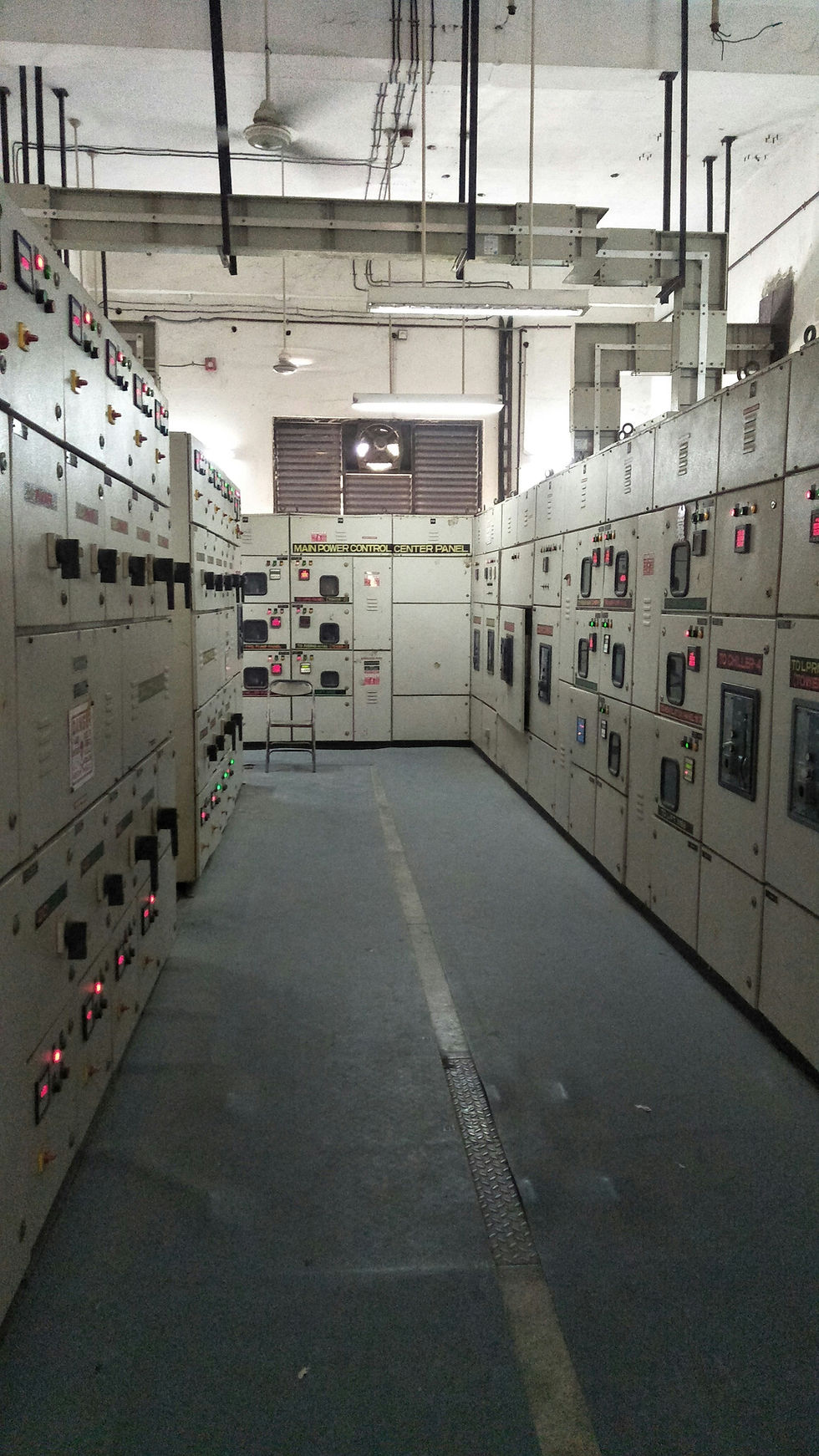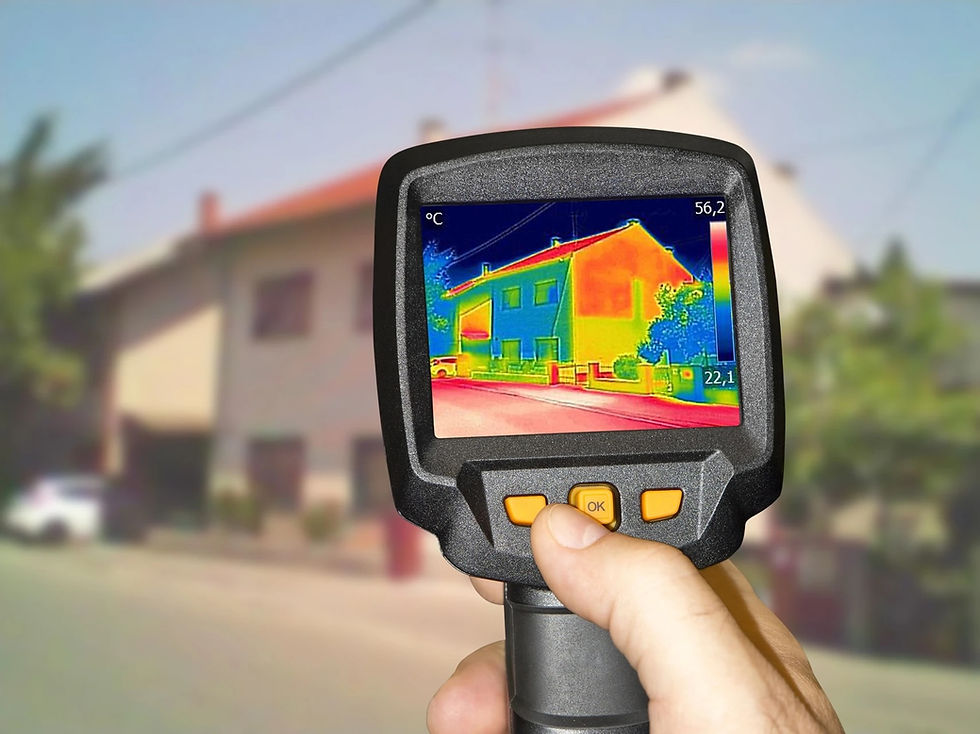Hospital NFPA 70B Inspections: Why Infrared Thermography Is Now Essential for Compliance
- Stephen Fike
- Oct 3
- 4 min read
Updated: Oct 23
Why NFPA 70B Inspections Matter for Hospitals and Healthcare
In healthcare, there is zero tolerance for system failure. Hospitals, clinics, and medical campuses operate 24/7, powering everything from surgical suites and imaging centers to refrigeration for life-saving medications. A single hidden electrical fault could mean more than a power outage — it could endanger patients, cause compliance failures, and disrupt critical care.
That’s why the 2023 edition of NFPA 70B makes condition-based maintenance mandatory — with infrared thermography (IR) recognized as one of the most effective inspection tools for healthcare facilities.
If your facility hasn’t yet adapted to these changes, here’s why a hospital NFPA 70B inspection with infrared thermography is no longer optional.

The Hidden Electrical Risks in Hospitals and Clinics
Healthcare facilities run on some of the most complex and heavily loaded electrical systems in the world, including:
Operating room power systems
Backup generators and UPS systems
HVAC for infection control
Vaccine and pharmaceutical refrigeration
Medical-grade IT infrastructure
Even with strict maintenance schedules, issues like the following can develop unnoticed:
Loose or corroded electrical connections
Overloaded circuits
Failing transformers or breakers
Deteriorating insulation
These problems often remain invisible during routine checks — but infrared thermography reveals them early, before they trigger downtime, fires, or costly emergencies.
NFPA 70B Compliance: What Changed in 2023
The 2023 NFPA 70B update shifted from recommendations to enforceable electrical maintenance standards. For hospitals and clinics, this means compliance is now a legal and accreditation priority.
Key requirements include:
Condition-Based Maintenance (CBM): Continuous monitoring with diagnostic tools like infrared thermography.
Mandatory Documentation: Detailed, traceable records of all inspections.
Annual Inspections: Critical electrical assets must be scanned at least once a year.
Failing to meet these standards can result in non-compliance during audits, insurance issues, and—most importantly—patient safety risks.
Why Infrared Thermography Is the Best Fit for Healthcare
Infrared inspections are ideal for hospitals because they’re non-invasive, safe, and do not disrupt patient care.
With IR thermography, hospitals gain:
Zero disruption to surgical suites, ICUs, or imaging centers
Real-time visibility into overheating panels and hidden electrical faults
Compliance alignment with NFPA 70B, NFPA 70E, OSHA, and Joint Commission standards
Actionable reporting for maintenance planning and capital budgeting
Simply put: infrared inspections are fast, precise, and compliant — everything a healthcare facility needs to maintain operational safety.
Patient Safety Begins with Infrastructure Safety
When hospital infrastructure fails, the risks extend far beyond repair costs:
Equipment shutdowns during surgeries or emergency care
Loss of refrigeration for vaccines or blood supplies
Fire hazards in sensitive hospital environments
HVAC failures that compromise infection control
Non-compliance during Joint Commission or state audits
Infrared inspections reduce these risks by detecting issues early, giving hospital engineering teams the ability to act before small faults become life-threatening problems.
Partnering with Experts for NFPA 70B Compliance
At AssuredNDT, we specialize in providing hospital NFPA 70B inspections using advanced infrared thermography. Our team is trained to work in sensitive healthcare environments where safety, discretion, and reliability are non-negotiable.
With us, you get:
Certified thermographers with healthcare experience
Reports formatted for NFPA 70B compliance and Joint Commission requirements
Clear, actionable insights with prioritized repair recommendations
Flexible scheduling to minimize patient and staff disruption
Final Thoughts: Proactive Safety Is the New Standard
Compliance is critical in healthcare — but prevention is even more important. Infrared thermography gives hospitals and clinics a proven, NFPA 70B-compliant solution to minimize electrical risks, protect patients, and safeguard mission-critical operations.
AssuredNDT is your partner in compliance and patient safety. Contact us today to schedule your hospital NFPA 70B inspection and ensure your facility stays protected, compliant, and always ready for care.
Frequently Asked Questions About NFPA 70B Compliance for Hospitals
1. Why are infrared inspections important for hospitals and clinics?
Infrared inspections help hospitals detect hidden electrical faults — such as overheating panels, loose connections, or failing components — before they cause downtime or safety incidents. This proactive approach supports patient safety and compliance with NFPA 70B standards.
2. What does NFPA 70B require for healthcare facilities?
The 2023 edition of NFPA 70B mandates condition-based electrical maintenance. Hospitals must perform regular diagnostic testing (like infrared thermography) and maintain documented inspection reports to meet compliance and insurance standards.
3. How often should hospitals perform infrared inspections?
Most healthcare facilities perform infrared electrical inspections annually, though critical areas (like surgical suites, imaging centers, and data rooms) may require more frequent scans. Frequency depends on risk level and system criticality.
4. Can infrared inspections be performed without disrupting hospital operations?
Yes. Infrared thermography is non-invasive and can be performed without shutting down systems or interrupting patient care. This makes it ideal for 24/7 healthcare environments.
5. How do infrared inspections help during insurance audits or Joint Commission reviews?
Infrared reports provide documented proof of preventive maintenance and compliance with NFPA 70B and OSHA 1910 standards. Insurers and accrediting bodies view these records as strong evidence of proactive risk management.
6. What risks do infrared inspections help prevent in hospitals?
They help prevent electrical fires, system failures during surgeries, and temperature loss in critical pharmaceutical storage areas — all of which can lead to major safety and compliance violations.
7. How can AssuredNDT help my hospital stay compliant?
AssuredNDT provides NFPA 70B-compliant infrared inspections, detailed reporting for Joint Commission reviews, and scheduled maintenance programs that minimize risk while maintaining uptime in critical healthcare operations.
Schedule your hospital NFPA 70B inspection with AssuredNDT to stay compliant and protect your patients.



